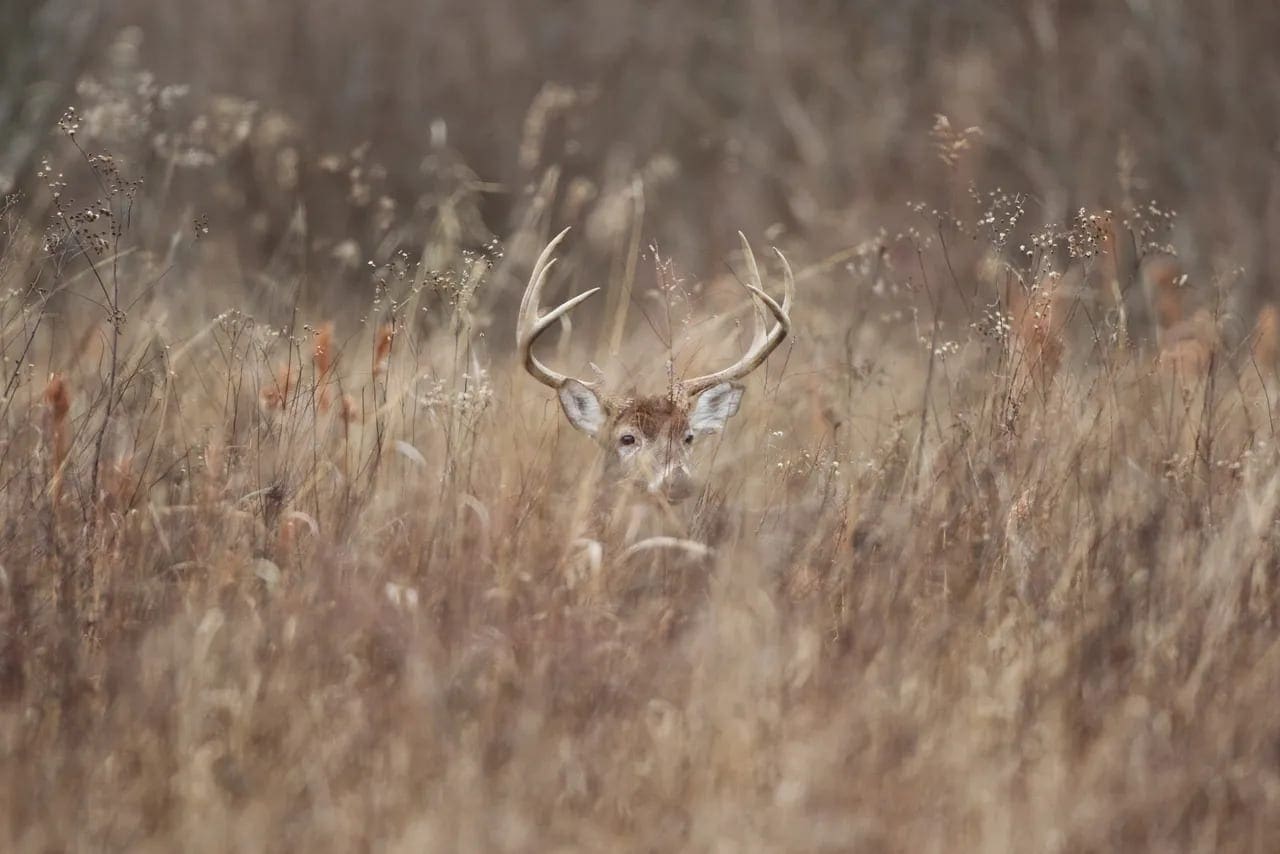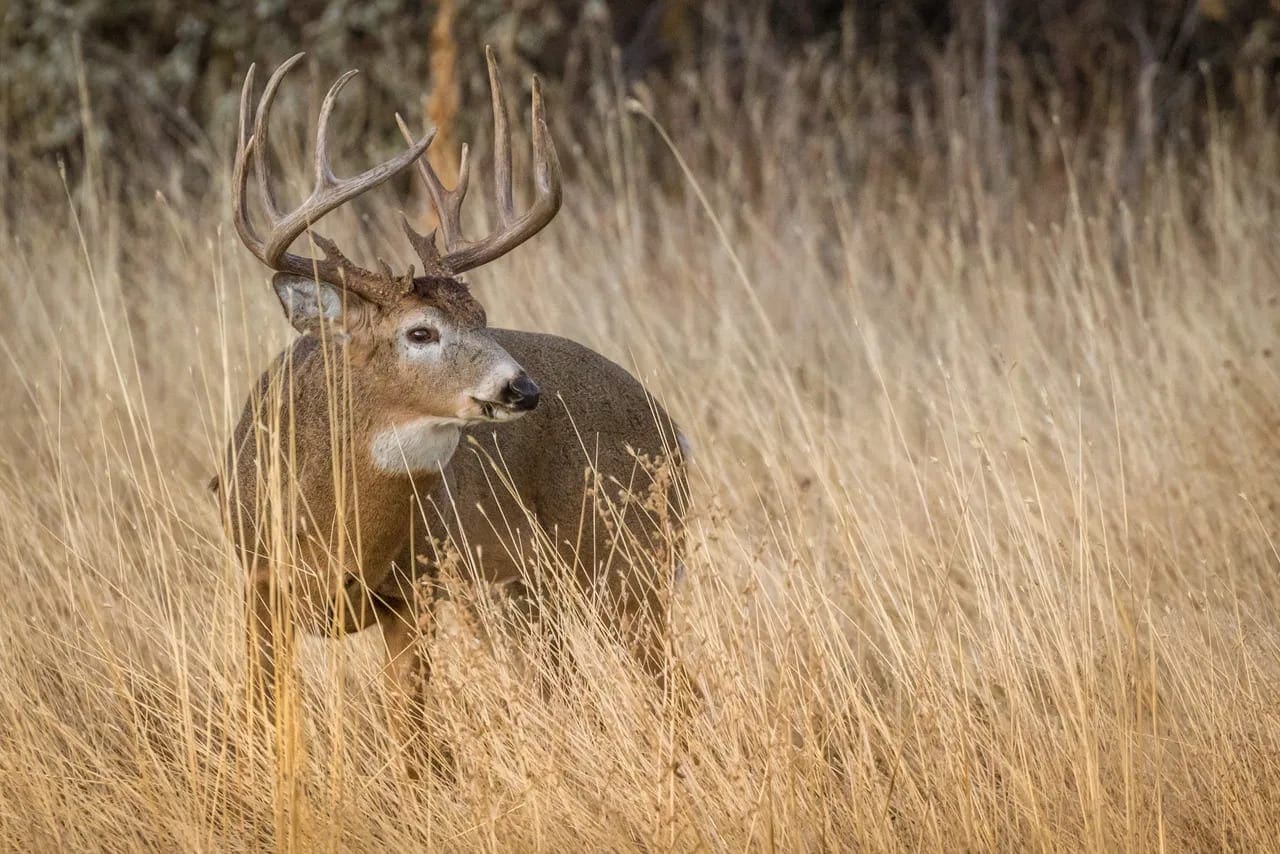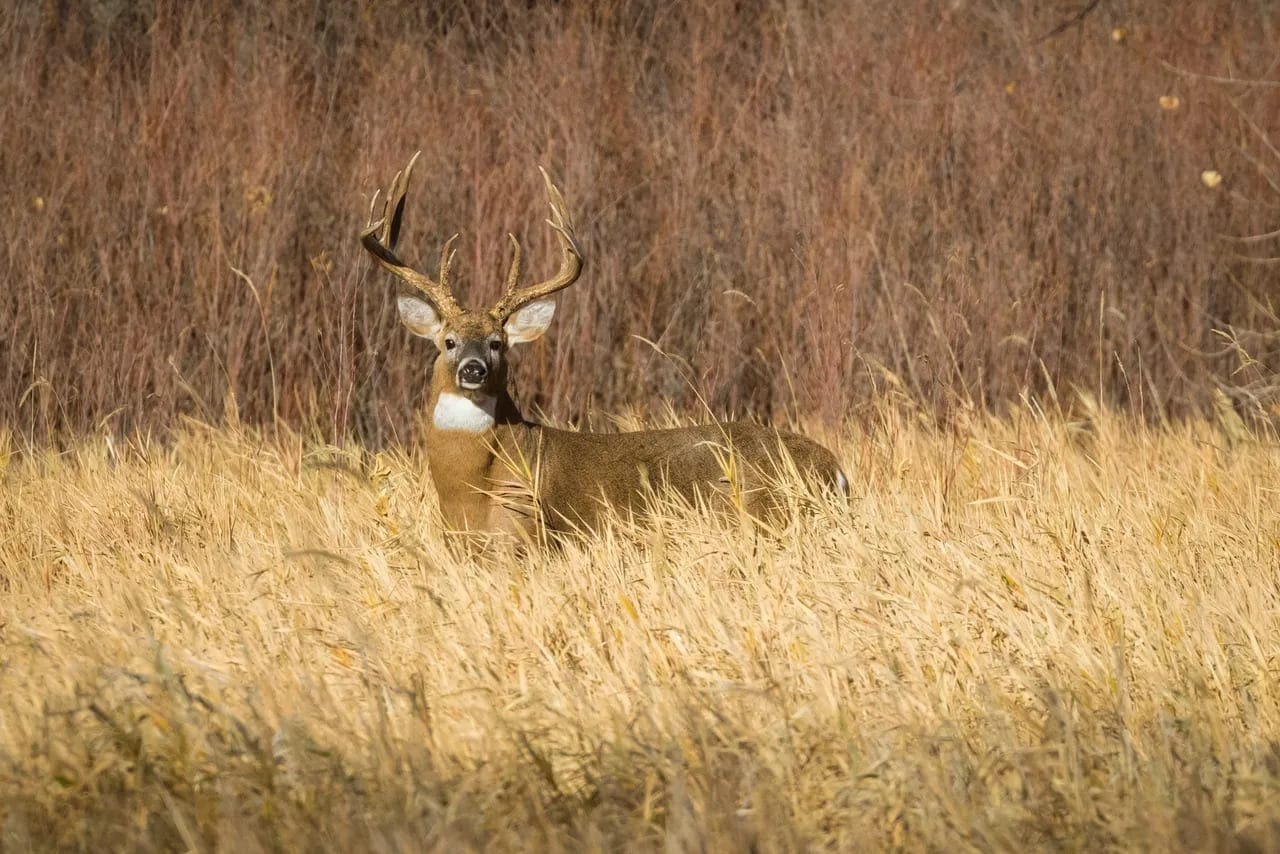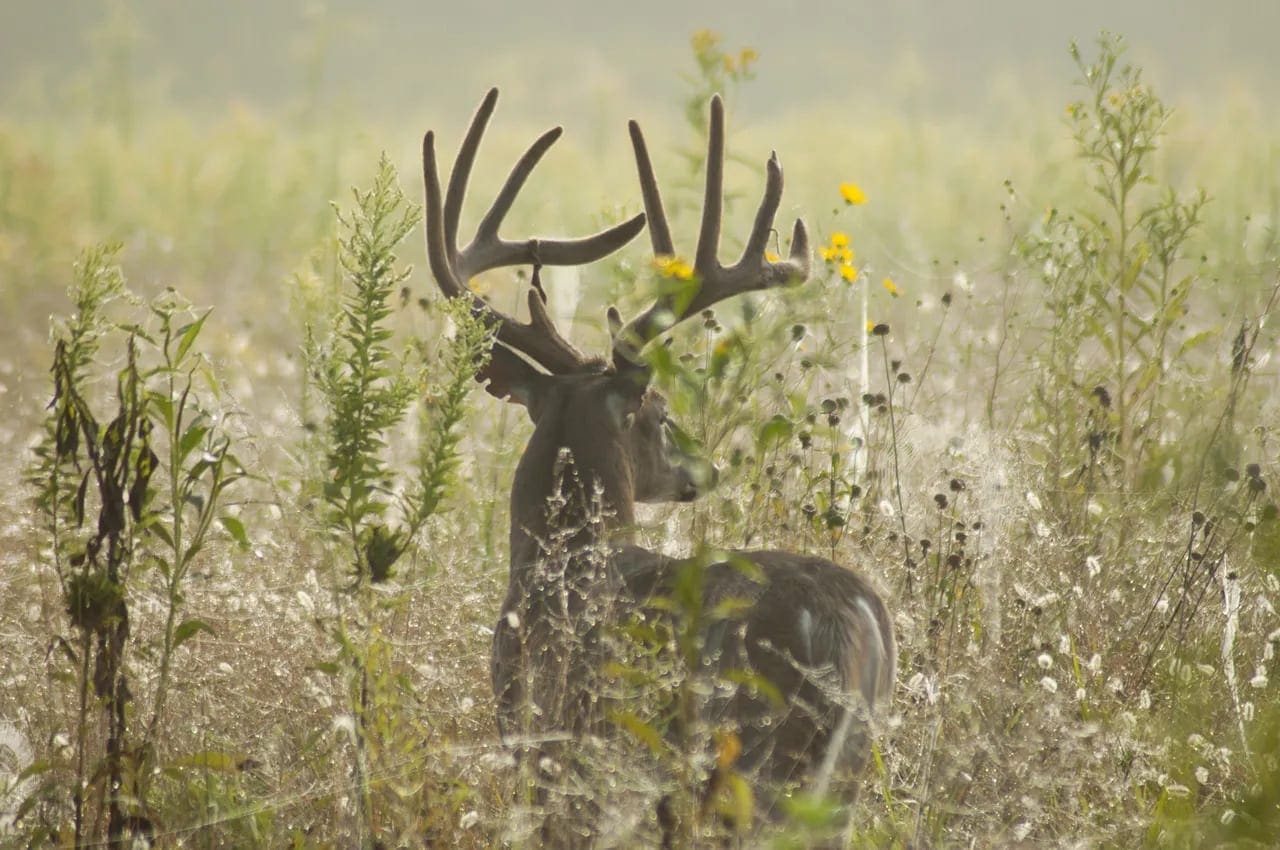
Not far from our office here in downtown St Louis, is Jefferson Barracks National Cemetery. This military cemetery was established after the Civil War and is made up of 331 acres with nearly 200,000 graves. While this cemetery is a respectful tribute to the men/women of our great Armed Forces, it’s also home to a host of Missouri wildlife, including whitetail deer. In fact, the Wikipedia page for Jefferson Barracks National Cemetery even shows a buck standing amongst the graves in the middle of a summer day.
It’s not uncommon to drive through the cemetery any day of the week and see bucks and does browsing around the 331 acres. Of course, there is no hunting of any kind in the cemetery, and because of this, the deer have a sense of security. The lack of hunting pressure casts a feeling of safety over the deer, so much so that even large mature bucks are often walking around during daylight hours.
I imagine everyone reading this can think of places where deer and humans regularly coexist without hunting pressure, and big bucks are often seen during daylight hours. In Lee Lakosky’s book, Hunting Mature Whitetails The Lakosky Way, he notes this same realization when years ago he would see monster bucks during daylight hours browsing inside a 20ac high-fence water treatment plant. It was this visualization that brought Lee to similar conclusions.

If you only learn one thing today, make it this. Hands down, the best way to increase mature buck activity during daylight hours is through providing their security. Pressure, hunting and otherwise, is the most influential factor that dictates a mature buck’s movement. You might have the best food plots around, you could have created the best funnel on the surrounding 1,000 acres, and you might have the fastest bow or highest quality glass on your rifle; but if that buck does not feel safe moving around, he just won’t. He’ll stay bedded down until the cover of darkness to move through the property. So if you’re getting nighttime photos of your bucks and never seem to find them during daylight hours, keep reading. But if you’ve got this part figured out, just remember, nobody likes a showoff.
Now if you’re still here reading, let’s assume you could use some help with this. How do you make bucks feel safe to move around during daylight hours? Several factors contribute to a buck feeling safe. Scent control, access to/from the property, disturbance of the property, vegetation cover or openness, are all factors contributing to this feeling of safety. Yes, all those are critical. The bottom line is that you have to be able to access your property without deer knowing you are there and leave the property without the deer knowing you were there.

Knowing these factors, we have to create habitat to fight both the deer’s eyes and nose. Beating deer’s nose is about playing the wind. Sure there are scent blockers, masks, covers, etc.; and I use them, but don’t rely on them if you can. Hunting the wind should always be priority #1 in scent control. And with some properties, you can use the terrain to your advantage when trying to beat a deer’s highly developed sense of smell.
Assuming you can avoid putting yourself directly upwind of a buck, the next factor in overcoming is the deer’s eyesight. While most people agree, deer do not have the best eyes, they are highly developed at detecting movement. Deer can stand motionless for several minutes and lay bedded for hours just watching. Because they detect movement, deer need to be in areas that provide cover for them but not too thick that they can’t see more than a few yards in front of them. Despite what the old-timers will tell you about deer loving the nastiest, thickets stuff and bed down right in the middle of it, it’s just not true. Deer will bed down in the best available habitat/cover they can find so if they are in the thickest, nastiest areas around, it’s because they lack quality cover in other areas. And you’ll often find if you get down in a buck’s bed, he can see a reasonable distance in specific directions.
Creating habitat deer can blend into while still being able to see movement, detect danger and escape; will be more impactful for your hunting efforts than any food plot or camo you can buy. The most significant way to do this is through vegetation. If you have a large food plot, over 3ac, consider using taller vegetation to break up a larger field into smaller food plots. These visual barriers create smaller, more secure feeding areas. They also force bucks to travel to each ‘individual’ small plot to check for does during the rut. Some species of row crops will do the trick, however, consider planting perennial native vegetation which will stand up year round and only needs to be planted once.

If you want to hold deer on your property, there is no better way than providing bedding/cover in the form of native forbs and grasses. Seasonal changes happen with food sources, water sources and even cover in closed canopy hardwoods and other areas. But establishing native forbs and grasses will consistently provide food and shelter for deer all year long. A native stand of grasses and forbs is the ideal cover for whitetails. Think of states like Kansas or Nebraska, full of CRP acres, tallgrass and shortgrass prairies, yet full of big mature bucks. Prairies or native grass and forb plantings become a place for fawns to hide, deer to bed/cover in for safety and security, they create thermal warmth during cold winter months by allowing deer to get out of the wind and still stay in the sun. Though probably one of my favorite things, they make excellent places to find multiple sheds after a prescribed burn.
Don’t make the mistake of hunting more to find a daytime buck. Instead, create the habitat necessary to provide safety and security for your deer. When you do that, you’ll transform your hunting grounds into the best deer hunting you’ve ever had. Creating more buck activity, sightings, and opportunities than you thought possible.

